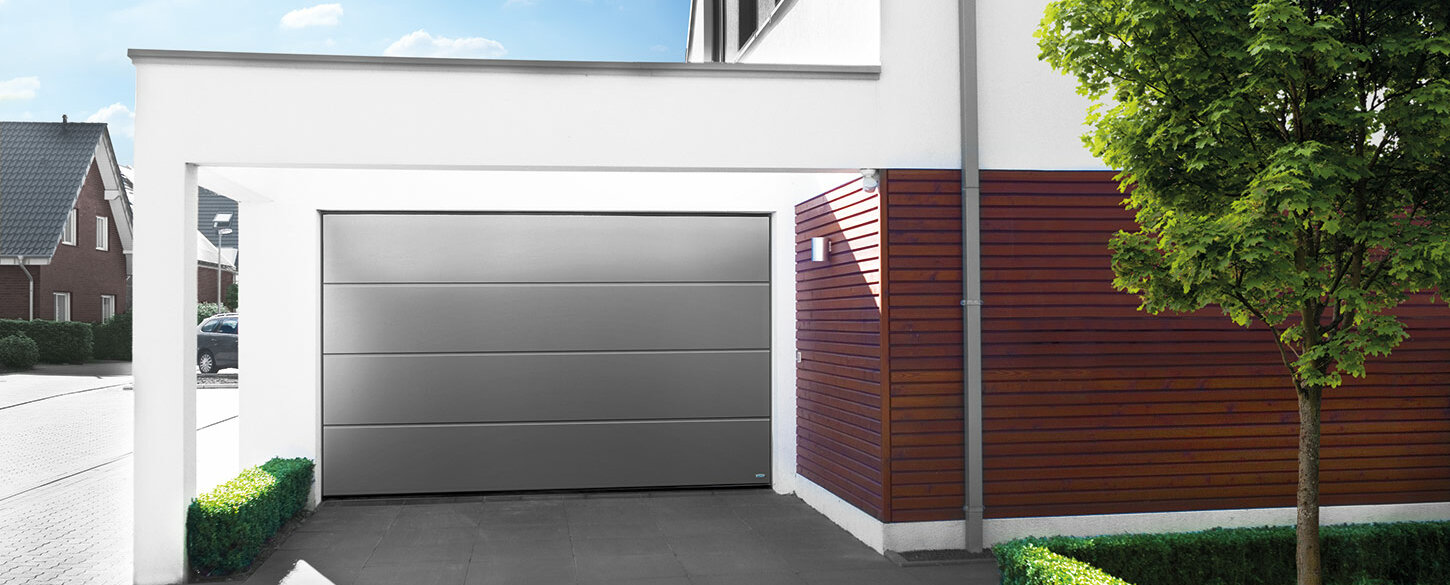The Novoferm guide
Tips & tricks for garage doors

Tips & tricks for garage doors
Compared to your living space, your garage is probably both less well insulated and hardly designed for efficient ventilation. Many such parking spaces have a relatively simple roof and there are few, if any, windows. The garage door usually remains closed to protect the valuable contents.
The possible results are damp garage walls, a wet garage floor, mould, fungus and rust - even on parked vehicles and other stored items - and even lasting damage to the fabric of the building.
There is no doubt about it: too much moisture in the garage is a serious problem. This can often be traced back to a lack of or poor garage ventilation. Here you can find out everything you need to know about garage ventilation.
Especially in the cold season, i.e. in autumn and winter, rain, snow, wet leaves and, last but not least, your rain-covered vehicle can quickly cause moisture to accumulate in your garage. Corresponding influences enter the room directly through the open garage door and/or creep through the often barely sealed window cracks and other inadequately insulated areas.
If you then ventilate your garage incorrectly or at least not sufficiently, the moisture builds up. Condensation forms on the garage walls and ceiling. This can ultimately lead to the formation of salt efflorescence (saltpetre) and mould. Saltpetre is characterised by whitish, flake-like areas. Corresponding nitrate salts are able to damage the plaster and, in the worst case, even attack the masonry.
Mould can also cause damage to the building or even to parked cars and other objects. In addition, negative health consequences are possible. The situation quickly becomes critical, especially if a mould-infested garage is directly connected to the house. Once mould starts to form and spread (perhaps unnoticed at first) behind cupboards and panelling in the garage and ultimately into the living space, extensive renovation work may be unavoidable.
Last but not least, increased humidity favours the formation of dripping walls and small puddles on the garage floor. Corrosion on cars, bicycles, tools etc. is pre-programmed here. However, all of this can be avoided relatively easily by ventilating your garage.
Mould often forms more quickly than expected. Especially in inaccessible corners, where moisture tends to collect and is less able to dry out, small patches of mould can be found in many garages. If there is mould in your garage, it should be removed immediately.
If you already have large areas of mould in the garage, often only a specialist company can help. If the mould is less extensive, you can use a special cleaning agent. You should always wear breathing protection and gloves to protect yourself from both the cleaning agent and the mould particles.
To prevent further mould infestation, you should ventilate your garage regularly. You can also apply anti-mould paint to the walls. Keep an eye on areas affected by mould and similar areas. If mould reappears, react quickly to prevent it from spreading.

Ventilate, ventilate, ventilate: This is the motto if your garage is significantly damp - open the garage door and all windows. If puddles have already formed, you should wipe them up. Ideally, damp walls should also be wiped dry. Also remove any other elements that contribute to increased humidity, such as leaves or open buckets of liquid. Once the obvious dampness has been removed, you should not close your garage again straight away. Depending on the weather, leave it open for as long as possible so that the draught dries out the critical areas. If the weather is too bad, construction fans, dehumidifiers or simply fans can help.
So that you don't even have to think about "How to remove damp from the garage and get rid of mould?", we recommend - depending on the weather - that you air the room for half an hour every day. Open the door and all windows. The effect is particularly good on cold, dry days. However, avoid opening them when humidity is high.
For long-term, convenient protection, consider installing a garage door opener with an automatic ventilation function. A special ventilation system will also save you a lot of work and reliably keep your garage dry.
With garage door systems from Novoferm, you can massively reduce the risk of damp and mould in your garage. We offer you optimally insulated solutions with intelligent ventilation functions. Trust in innovation, quality and reliability in products and service - based on more than 60 years of company tradition.